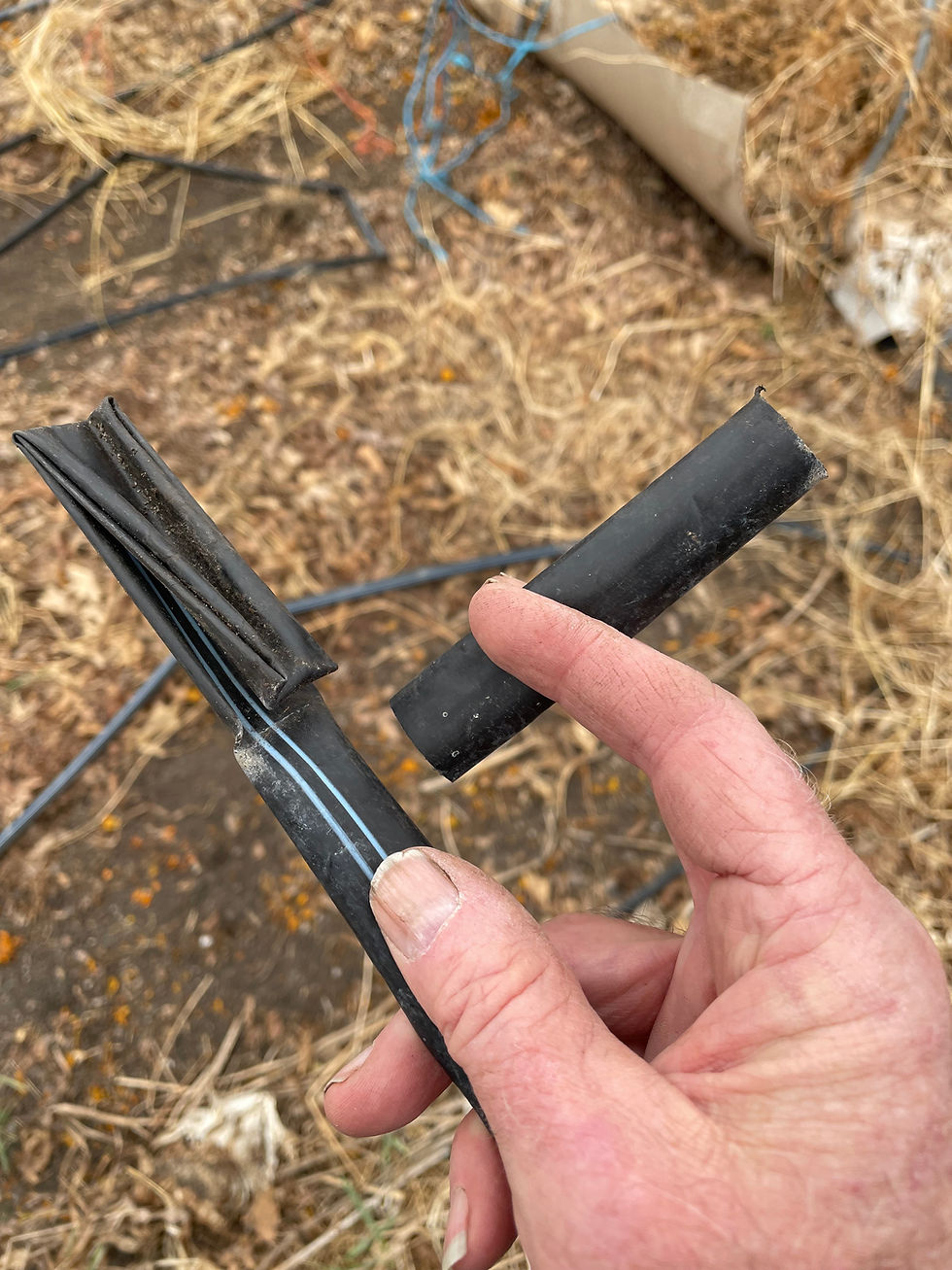How to Minimize Irrigation Even in the Hottest of Summers
- Christine R. Nelson
- Jul 27, 2023
- 2 min read
By Christine R. Nelson

Photo credit: Many Hands Organic Farm
The height of the 2022 growing season will be remembered for the undesirable combination of heat and drought, with all areas of Massachusetts experiencing some severity of drought. You may have felt compelled to irrigate as a grower – a lot. But irrigation has serious downsides: the loss of a precious resource, energy, money and time. And not everyone has access to a dependable source of water for irrigation.
Local farmers are finding ways to adapt to increased heat and drought with minimal to no irrigation. Julie Rawson, co-owner of Many Hands Organic Farm located in Barre, MA, describes her 2022 farming season, despite the challenging weather, as “good, one of her best”. Her irrigation practices are notable because they don’t irrigate. Crops are watered once - at the time of transplant - with a hose. Crops also receive regular foliar nutrient sprays. Despite the lack of watering, Many Hands Organic Farm is still able to grow a full diversity of high-quality produce for their customers.
“We used to irrigate everything with drip tape and fertilizer once a week. Four years ago, I realized that this wasn’t necessary. So, we stopped.” Rawson credits her soil health practices for making that change possible.
Many Hands Organic Farm’s soil practices that directly affect soil moisture include:
Applying deep mulch to most crops (except for lettuce and radishes which get damaged by a deep mulch), usually with several inches of straw or other organic matter.
Not tilling. “We have been no-till since 2014 which has made a huge difference in our soil health. We no longer destroy with each tilling the mycorrhizal fungi that carry water and nutrients to our crops”, explains Julie. No-till practices also maintain good soil structure, enabling soil pores and aggregates to hold onto water.
Continuously adding organic matter. The farm uses the various types of organic matter available to them: wood chips (that Julie says are great for worms and mycorrhizal fungi), straw, hay, leaves, and manure from their own animals. Compost is not used.
Leaving plant roots in the ground, unless being harvested for eating.
Using cover crops, such as clover planted between crops, is another way the farm adds organic matter and keeps the soil covered, limiting evaporation.

Spraying plants with a foliar nutrient blend at MHOF.
The farm’s soil organic matter measures out at an impressive 9-10%. They have built that up over the years from the land’s original 5% soil organic matter. Increased soil organic matter means more stored water. Soil scientists at USDA tell us that for every 1% increase of organic matter in the soil, there will be an additional 25,000 gallons of available soil water per acre.
Healthy soil practices transform soil over time, allowing it to retain more water. Needing less irrigation can be a game changer for growers. We can add this benefit to the long list of soil health benefits that we regularly discuss, such as improved fertility and disease and pest resistance. Admittedly, healthy soil practices are not a quick fix to our watering woes. But done consistently, we can see improvements every year, with dramatic changes over time. More importantly, these practices enable growers to be more adaptable and still grow successfully, even in an insufferable summer.
Originally printed in https://www.nofamass.org/articles/2022/11/how-to-minimize-irrigation-even-in-the-hottest-of-summers/
Christine is a former intern at NOFA/Mass.






Comments